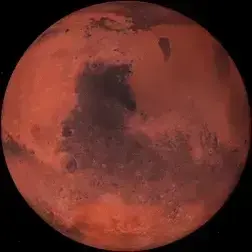“The planet’s atmosphere would feature something akin to Earth’s water cycle, but instead with sand cycling between solid and gaseous states. From the hotter, lower levels of the atmosphere, with temperatures close to 1,000C, silicate vapour would rise up, cool and form microscopic grains of sand, too small to see. Eventually, these clouds of sand dust would become dense enough that they begin to rain back down to the lower layers of the atmosphere. Below a certain level, the sand would sublime back into vapour, completing the cycle.”
Ash Twin or Ember twin
This is the best summary I could come up with:
Nasa’s James Webb space telescope has revealed a planet where specks of sand fall as rain, in groundbreaking observations.
The latest observations give an unprecedented glimpse of a strange and exotic world beyond our solar system that features silicate sand clouds and rain, scorching temperatures, raging winds and the distinct burnt-matches scent of sulphur dioxide.
Wasp-107b is similar in mass to Neptune but almost the size of Jupiter, and its vast, diffuse nature allows the James Webb telescope to peer deep into its atmosphere.
The latest observations, published in Nature, reveal evidence of water vapour and sulphur dioxide, which would give the atmosphere a smell of burnt matches.
From the hotter, lower levels of the atmosphere, with temperatures close to 1,000C, silicate vapour would rise up, cool and form microscopic grains of sand, too small to see.
A central aim of the James Webb space telescope is to analyse the atmospheres of distant planets and search for biosignature gases that could indicate the presence of life.
The original article contains 630 words, the summary contains 166 words. Saved 74%. I’m a bot and I’m open source!
I’m gonna tell Anakin, he might want to build a home there.



